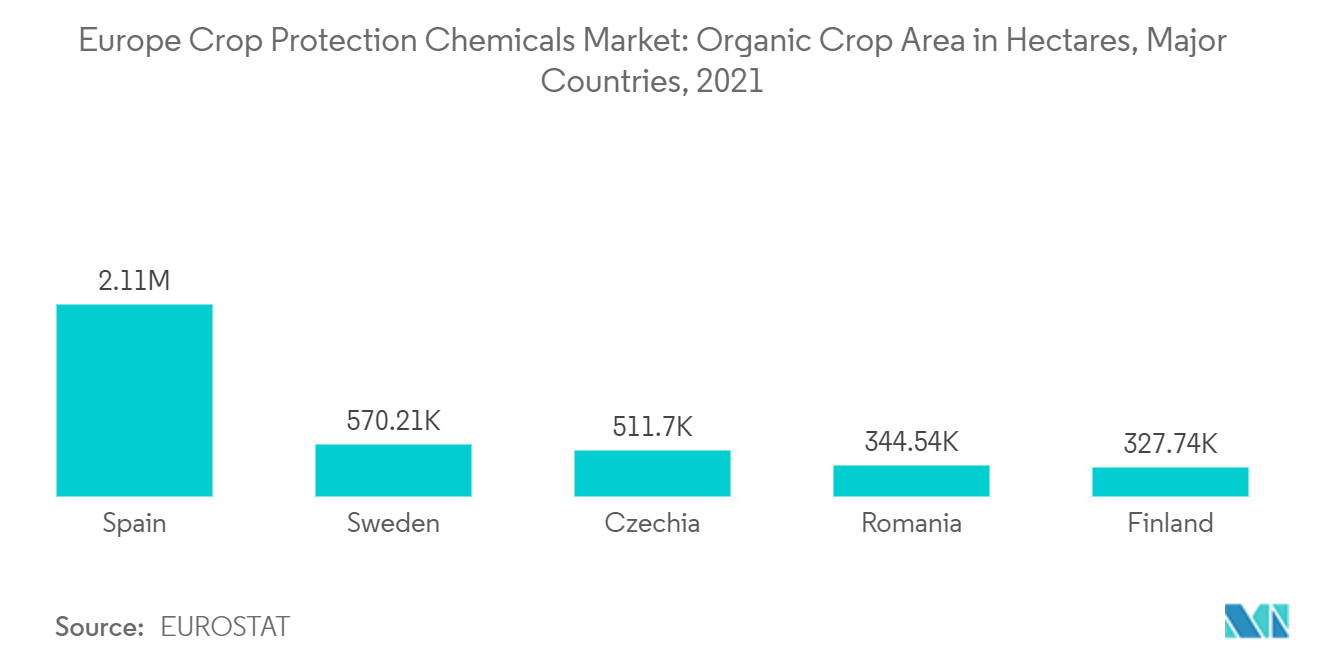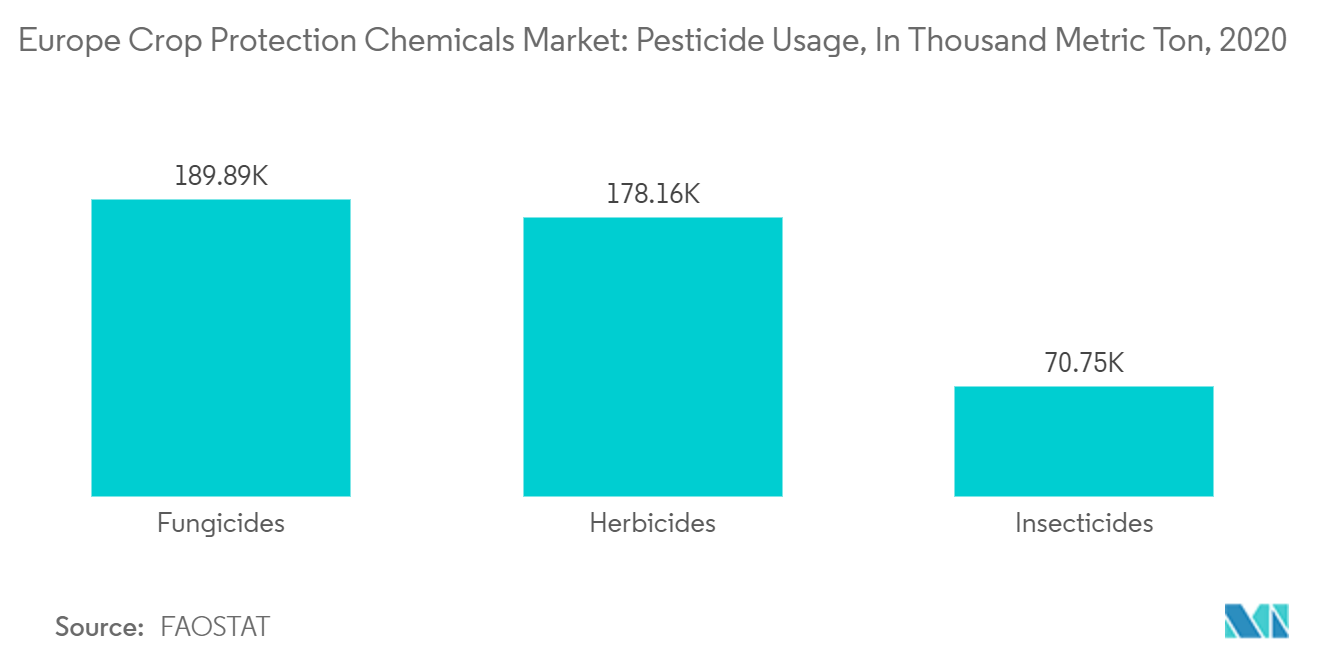Market Trends of Europe Crop Protection Chemicals Industry
Growing Organic Food Consumption is Driving Biopesticides
- Biopesticide adoption is occurring all over the region, especially in developed and some developing countries. The ban on using various pesticides such as glyphosate, neonicotinoids, and paraquat is expected to drive the demand for biopesticides in the region. Currently, Europe is the second-largest market for biopesticides globally. Demand for organic and completely natural foods is increasing stably, and biopesticide consumption has inevitably been under various improvisations.
- According to Eurostat, Spain was the largest country in the region in 2021, with 2.1 million hectares of organic crop area, followed by Sweden. Countries such as Spain, Sweden, and Czhezia were the largest utilizers of biopesticides because of the higher organic cultivation area in these countries in 2021, which is expected to drive the market in the region during the forecast period.
- Pesticides help in the optimal usage of resources for plant growth and protect the crop from various pathogens. Some pesticides repel animals coming towards them with the help of pheromones. Biopesticides are regulated in the European Union in the same manner as chemical pesticides. The Organization for Economic Co-operation and Development (OECD), a 34-country group headquartered in Paris, France, assists EU governments in quickly and thoroughly assessing biopesticide risks to humans and the environment.
- In Europe and other advanced countries, there are limits on residue levels present in food. However, no such limits usually exist for most biopesticides due to their comparative safety. Quicker access for farmers to innovative and new technologies such as precision and digital tools, as well as increased use of biopesticides, is expected to drive the market in the following years.

Fungicides is Largest Market in the Region
- Chemicals kill or halt the development of fungi that cause plant diseases, such as storage rot; seedling diseases; root rots; vascular wilts; leaf blights, rusts, smuts and mildews, and viral diseases. These can be controlled by the early and continued application of selected fungicides that either kill the pathogens or restrict their development. According to Food and Agriculture Organization Corporate Statistical Database (FAOSTAT), fungicides are the most used segment of the pesticides in the region, with 189,888 metric tons in 2020, which is higher than the previous year, followed by herbicides and insecticides.
- Annual sales of pesticides in the European Union (EU) amounted to almost 360,000 metric tons in 2021, with a 46% share of fungicides as the most sold group. Even with the deployment of resistant cultivars and integrated control strategies, fungicides still contribute heavily to plant disease control in conventional farming. Even organic systems, although promoted for environmental benefits, depend on fungicides. In these systems, the amounts applied are sometimes high to compensate for lower efficacy.
- Recently, new fungal plant diseases have emerged worldwide associated with the globalization of trade and environmental change, thus further increasing farmers’ dependency on fungicides. Nevertheless, their use in agriculture has been associated with growing environmental and public health concerns. In addition to their negative environmental impacts (e.g., on biodiversity), some fungicides have been associated with increased risk to human health, particularly among farmers. And also among people living in agricultural areas. However, the use is expected to grow in the coming years to avoid crop damage.
- One of the most commonly used fungicides in the world, considered by farmers as crucial for resistance management, is no longer approved as an active substance in the EU. The ban on mancozeb was first proposed by the European Commission early in 2020. Many imported products may be affected by MRL reductions because mancozeb is a key pesticide in the production of crops such as bananas, cranberries, and vegetables. Despite the EU clampdown on pesticides, France has approved three years of seeds coated with neonicotinoid insecticides, which are thought harmful to bees. Hence, many major players are innovating new products, fungicides, which are more useful in eradicating diseases and resulting in better performance than bio-based products in the country.

